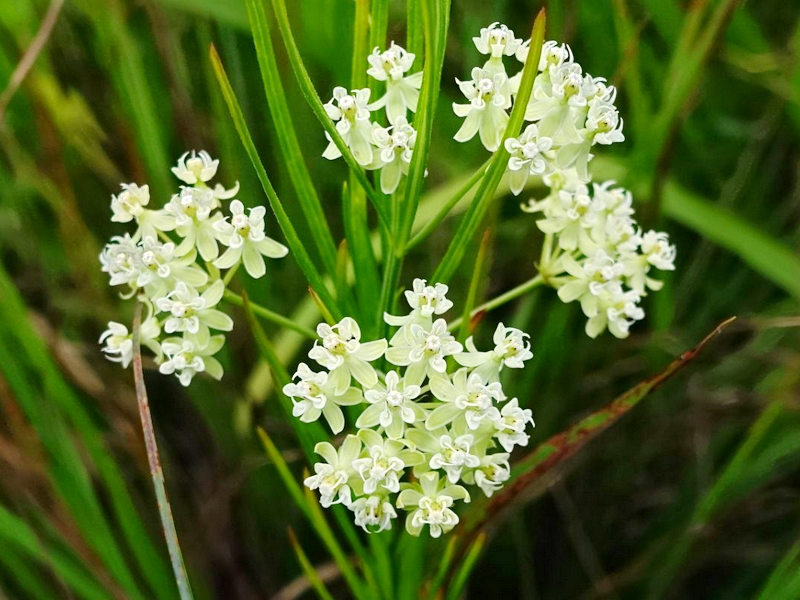Whorled Milkweed
Asclepias verticillata
Click here to download a PDF of this plant information page (for printing).

Sun Exposure: Sun, Part Sun
Season of Interest: Summer, Fall
Bloom Time: June - August
Bloom Color: White
Height: 8 to 30 in.
Spread: 12 to 24 in.
Spacing: 24 in.
Water Needs: Average
Maintenance: Very little
Soil Type: Clay, Loam, Sandy Rocky
Soil pH: Acidic, Neutral
Soil Drainage: Well drained
Pests: None
Diseases: None
Wildlife: Bees, Buterflies

Description:
Whorled milkweed is a flowering perennial flower native to Eastern North America. Scientifically known as Asclepias verticillata, it will grow to about 30 inches tall by 12 to 24 inches wide and produce white flowers for up to two months. As a milkweed, it serves as a host for monarch butterflies as well as attracting scores of other pollinators. Whorled Milkweed is one of the shortest growing (height) but it can spread aggressively via rhizome root system. In our experience, this plant can multiply by 6-fold in a single year. However, our patch of Whorled milkweed produced more monarch butterfly caterpillars than any of our other milkweeds. Whorled milkweed will take little care to thrive. For more information see:
plants.ces.ncsu.edu/plants/asclepias-verticillata
Care and Growing Tips:
Whorled milkweed can grow in a huge variety of places and conditions. But is most commonly found in ditches, roadsides, along railroads, and in drier locations where competition from taller plants isn’t significant. Whorled Milkweed will grow best in full sun but it can grow in partial shade with 4 to 6 hours of direct sunlight per day.It grows best in medium-moist soil, or average moisture but can tolerate drier conditions on slopes and it is drought tolerant. Whorled milkweed is very adaptable to soil condition and will grow well in almost any soil.
The flowers of Whorled Milkweed produce significant amounts of nectar that attract numerous species of pollinators including butterflies and bees. The foliage is also a host of the monarch butterfly and the caterpillars will feed on the foliage voraciously. As a general rule, deer and rabbits avoid whorled milkweed as it has a bitter taste.